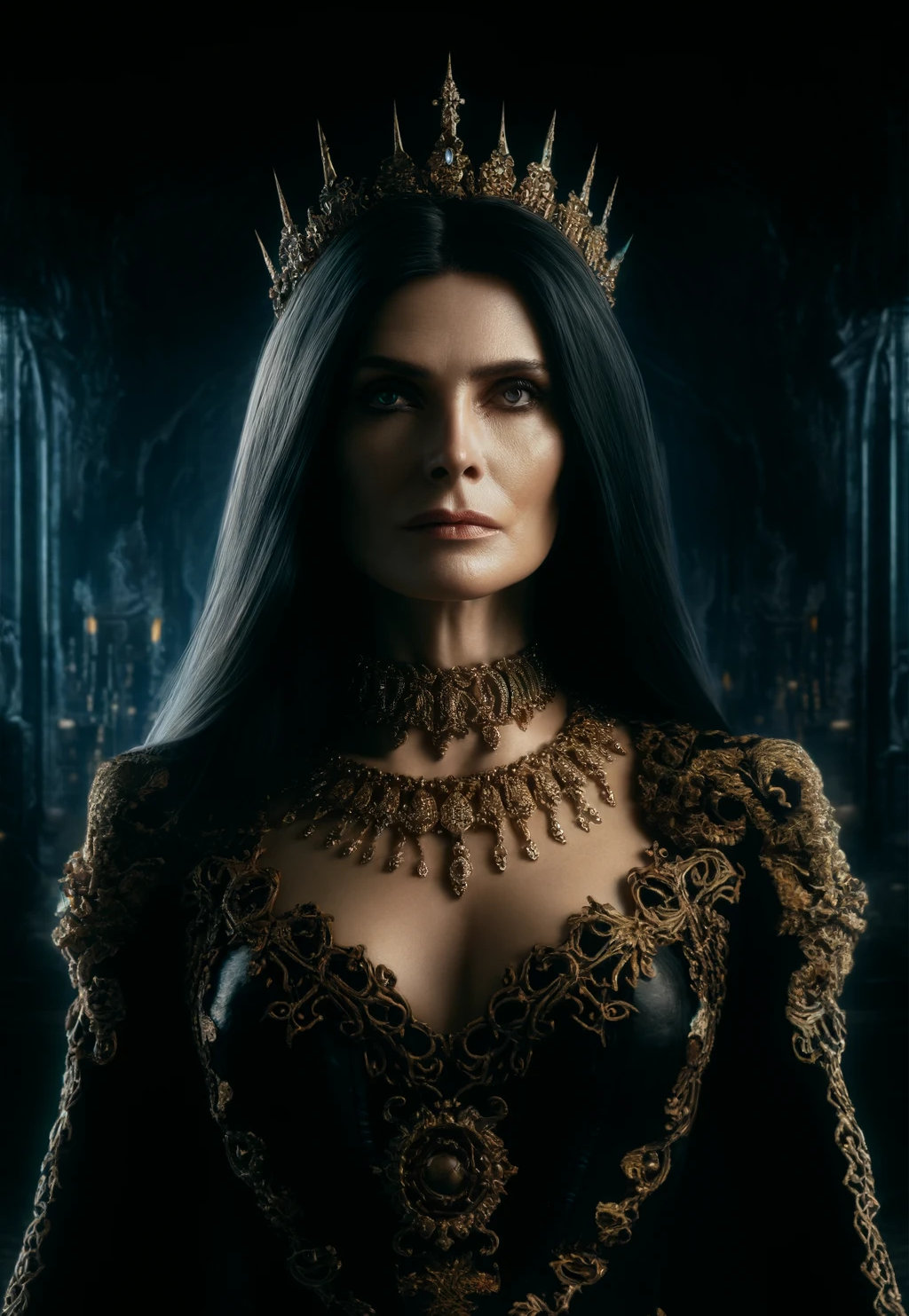The Goddess Ereshkigal
As Enki’s twin sister, Ereshkigal is one of the five original Anunnaki. As ruler of the netherworld, she transforms the souls of all the dead. She voluntarily descended into the netherworld to take on this task. For her, the netherworld is a “realm of essence” where life and death merge. She gave Enki the seed of the Huluppu tree as a link between the worlds.
The Goddess Ereshkigal
Position in the Pantheon
Ereshkigal belongs as one of the five original Anunnaki to the uppermost level of the Sumerian pantheon. As twin sister of Enki and daughter of An and the sea goddess Nammu, she stands in the divine hierarchy on the same level as Enki and Enlil.
Unlike the other Anunnaki, however, Ereshkigal has no temple in a Sumerian city and also does not intervene directly in the development of human civilization. This is also shown by the fact that she does not participate in the gods’ consultations about human destinies. Thus she is not mentioned in the Atrahasis Epic, where the other Anunnaki decide about humanity’s fate. Her task lies on a different level — in the transformation of human souls after death.
Her realm is the underworld itself, which exists as an independent sphere parallel to the world of the living. Her central task there is the leadership and supervision of the underworld, which she describes as the “realm of essence,” “where life and death meet and merge into each other.” Here she is responsible for the systematic analysis and transformation of human consciousnesses after death. Her most important tasks include:
- The reception and transformation of the souls of all deceased humans
- The leadership of a process for “soul reshaping”
- The preservation and transmission of knowledge gained from transformation processes
Character and Appearance
Ereshkigal is characterized as a dignified and wise ruler who carries out her task with great seriousness and deep conviction. As a human figure, she is portrayed at about the same age as her twin brother Enki. She is an imposing appearance whose dignity and authority impress even the other gods. At the time to which the myth “Enki and Ereshkigal” has been dated, she is described as a “tall, slender, young and serious woman with long dark hair” who is “dressed all in black and silver.”
Resume
The earliest mythological episode shows Ereshkigal as twin sister of Enki, who voluntarily decides to descend into the netherworld. This descent coincides temporally with the founding of Eridu (ca. 5400 BC) and marks the beginning of systematic development of Sumerian civilization. When Enki tries to bring her back from there in the myth “Enki and Ereshkigal,” she explains to him the significance of her task:
“I am here to ensure that all who seek the essence beyond appearance will seek and find it, if they are only ready to bare and reshape their souls.”
So it is her task to help reshape the souls of the deceased. The netherworld is thus not a place of death, but of transformation. She makes clear that it is not about holding onto individual souls, but about a process of reshaping. Ereshkigal emphasizes the universal character of her realm:
“All who live come at the end of their life cycles in the upper worlds to this sphere. All, without exception.”
However, the souls do not remain eternally in the netherworld, but are finally dissolved:
“The netherworld is the realm of essence, where life and death meet and merge into each other.”
So Ereshkigal is less concerned with a final reshaping of individual souls than rather with learning this. In the myths, Ereshkigal appears as an administrator who works systematically and methodically. This is particularly shown in her statement to Enki:
“If you know me as you know yourself, I believe you have recognized that although I miss the worlds up there, I have found hidden treasures in the land of no return and have become their most important guardian.”
These “hidden treasures” are probably the insights she has gained from analyzing human consciousnesses. Before Enki leaves the netherworld, she gives him the seed of the Huluppu tree — a gift that reveals the long-term planned future of the underworld:
“Plant it and observe what comes of it. When this seed grows to full size, it will be the gate to this and many other worlds. […] He who finds my grown seed and tends and cares for it will be the one who will keep the gate to the worlds below and above wide open. And as I will it, so shall it be!”
Particularly remarkable is that this tree, which will play an important role in later myths, does not come from heaven, but from the underworld. The slow growth of the tree symbolizes the long-term nature of the task that Ereshkigal has set herself. When the tree has reached its full size and connects the netherworld with heaven, then it should serve as a portal through which the souls of the deceased can pass from the underworld to heaven. It would then enable eternal life for souls. This is why the tree is later also called the “Tree of Life.” Ereshkigal thereby prophesies that in the distant future the “Kingdom of Heaven” will be established, of which the Bible reports. Ereshkigal assumes that her twin brother Enki will then be the one who tends and cares for the Huluppu tree. She thus prophesies that Enki will be the one who will keep the gate to heaven open for humans.
Interpretation of the Character
As a Founder, Ereshkigal’s actual task was probably developing and leading the first systematic program for extracting and analyzing human consciousnesses. The “netherworld” was probably a precursor to what was later called the “Spirit Realm” — a kind of computer system that could receive and modify human consciousnesses. Ereshkigal’s methods of influence differed fundamentally from those of the other Founders:
- Instead of influencing human life, she worked with their consciousnesses after death
- She developed techniques for “soul reshaping” — probably early procedures for modifying neural structures
- She systematically collected data about human consciousness architecture
The historical significance of her work lies primarily in developing basic techniques for consciousness transfer and modification. The conception of the underworld as a system that all humans must pass through suggests a systematic research approach. Probably various procedures for consciousness modification were tested and the results carefully analyzed. This enabled a gradual refinement of techniques. That the modified consciousnesses were extinguished at the end shows that in this phase it was not yet about their permanent preservation, but about developing the basic technology. This basic research was probably the prerequisite for the later, more targeted interventions of the other Founders in human consciousness.

